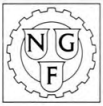Related Research Articles
International Photo-Engravers' Union of North America (IPEU) was a labor union formed in 1904 to represent halftone photoengravers in the printing industry. Its successor union is the International Brotherhood of Teamsters, Change to Win Federation.
The International Typographical Union (ITU) was a North American trade union for the printing trade for newspapers and other media. It was founded on May 3, 1852, in the United States as the National Typographical Union, and changed its name to the International Typographical Union at its Albany, New York, convention in 1869 after it began organizing members in Canada. The ITU was one of the first unions to admit female members, admitting women members such as Augusta Lewis, Mary Moore and Eva Howard in 1869.

The Swedish Graphic Workers' Union was a trade union representing printing industry workers in Sweden.

The Amalgamated Lithographers of America (ALA) is a labor union formed in 1915 to conduct collective bargaining on behalf of workers in the craft of lithography. The ALA was established through the amalgamation of several small unions already existing in the lithographic industry, one of which dated back to 1886.

The International Federation of Trade Unions was an international organization of trade unions, existing between 1919 and 1945. IFTU had its roots in the pre-war IFTU.
The Congreso Obrero de Filipinas was a trade union federation in the Philippines, established in 1913 and dissolving into a paper organization which vanished towards the end of the 1930s. The COF was considered the second labor federation in the history of Manila's labor movement.

The Norwegian Graphical Union was a trade union representing workers in the printing industry and related trades, in Norway.

The Unión de Impresores de Filipinas was one of the first national trade union centers in the Philippines, along with the Unión Obrera Democrática Filipina. Established in 1906, it was a national union of all workers in the printing trade intended to consolidate them into a single confederation.

The International Graphical Federation (IGF) was a global union federation bringing together unions of printing workers around the world.

The International Typographers' Secretariat (ITS) was a global union federation bringing together unions of printers around the world.
The International Federation of Bookbinders and Kindred Trades was a global union federation representing unions of bookbinders.
The International Federation of Lithographers, Lithographic Printers and Kindred Trades (IFL) was a global union federation bringing together unions representing print workers.
The Graphics Federation was a trade union representing workers in the graphics and printing industries in Denmark.
The Danish Typographical Union was a trade union representing typographers in Denmark.
The Union of Lithographers, Lithographic Printers and Kindred Trades was a trade union representing printers in Germany. It was sometimes referred to as the Senefelder Union, after Alois Senefelder, the inventor of lithography.
The Dutch Litho-, Photo- and Chemographers' Union was a trade union representing printers in the Netherlands.
The Danish Bookbinders' and Stationers' Union was a trade union representing bookbinders and workers involved in making stationery in Denmark.
The Swedish Lithographic Union was a trade union representing lithographic printers in Sweden.
The Swedish Typographers' Union was a trade union representing book printers in Sweden.
The International Brotherhood of Bookbinders (IBB) was a labor union representing bookbinding workers in the United States and Canada.
References
- 1 2 International Federation of Lithographers, Printers and Kindred Trades (1936), Bulletin, pp.19-20
- ↑ "Man kan ikke være venner med alle". Arbejdermuseet. Retrieved 13 February 2020.
- ↑ Ebbinghaus, Bernhard; Visser, Jelle (2000). Trade Unions in Western Europe Since 1945. Basingstoke: Palgrave Macmillan. p. 178. ISBN 0333771125.